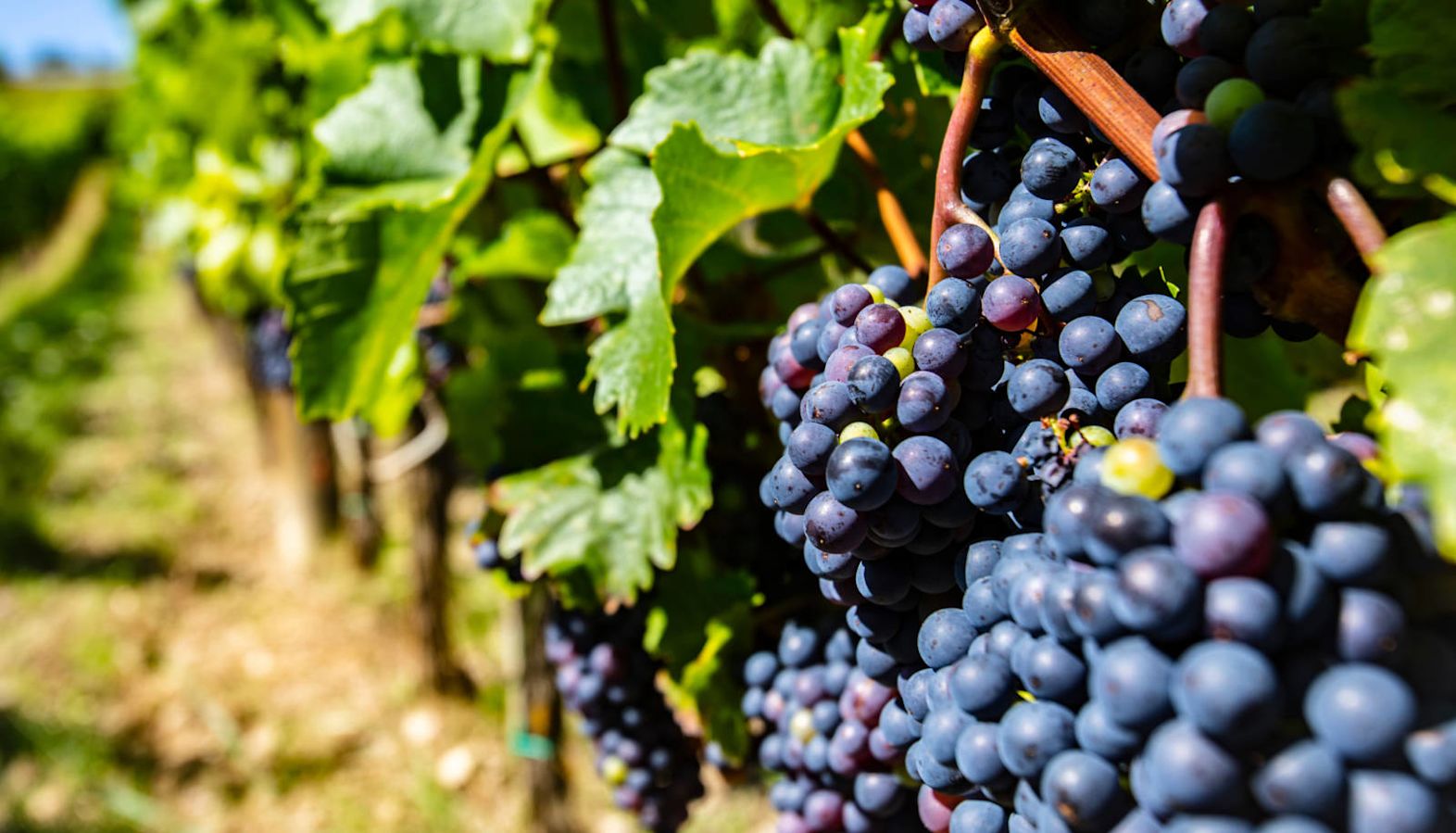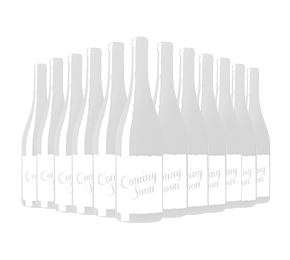Chat with Vinny
If you have ever heard of the term ‘noble grape’, you may wonder what this rather grand title means. We’re here to help demystify the world of wine, so whether you’re new to wine or already a connoisseur, read on. We’ll tell you everything you need about noble grapes and what elevates them to this lofty status.
What is a noble grape?
The term ‘noble grape’ has traditionally been used to refer to grape varieties famous for consistently producing high-quality wines in various regions around the world. However, there is no official definition for what qualifies as a noble grape – the term is historical and originates from the classic wine regions of Europe. Traditionally, just six grape varieties were considered noble: three white (Chardonnay, Riesling and Sauvignon Blanc) and three red (Cabernet Sauvignon, Merlot and Pinot Noir). However, with the global expansion of wine production, many grape varieties beyond the original six ‘noble’ ones have consistently demonstrated their ability to produce high-quality wines. Despite the lack of consensus among experts, the moniker is still helpful in identifying grape varieties with a proven record of producing excellent wines.

The original six noble grapes
Each of the original six noble grapes has its unique characteristics and flavours:
1. Chardonnay
Chardonnay grapes are used to make a wide variety of wine styles, from crisp and mineral in cooler climates to rich and buttery in warmer regions. Flavours can range from green apple and citrus to tropical fruits and even caramel and vanilla when Chardonnay is oak-aged. This green-skinned grape was first grown in the Burgundy region of France, but it is now a popular grape variety around the world. In the warmer climates of California’s Napa Valley and Australia’s Margaret River, Chardonnay often produces richer, fuller-bodied wines with ripe tropical fruit flavours.

2. Sauvignon Blanc
Sauvignon Blanc grapes make dry, white wines with high acidity. Look for zesty, citrus flavours such as grapefruit and green fruit with herbaceous notes such as green bell pepper, grass and sometimes even a flinty minerality. This green-skinned grape variety has strong historical ties to Bordeaux and the Loire Valley, particularly the regions of Sancerre and Pouilly-Fumé. It is also grown in Sancerre, Napa Valley and Marlborough. In New Zealand, the grape has more intense characteristics and makes aromatic wines with gooseberry flavours, passion fruit and fresh herbs.
3. Riesling
Riesling is a white grape from Germany. It is well-known for its versatility and ability to produce a variety of wine styles. Riesling wines can range from dry to very sweet, but they all have one thing in common – a high level of acidity that gives the wine a refreshing and well-balanced taste. The dominant flavours of Riesling are fruity, with notes of green apple, pear and lime. The wine may have a more pronounced apricot or peach flavour in warmer climates. Riesling often has a unique minerality that adds to its complexity.
4. Cabernet Sauvignon
Originally from the Bordeaux region of France, Cabernet Sauvignon is grown worldwide. It’s famous for making full-bodied red wines known for their high tannin levels and noticeable acidity, which means they have excellent ageing potential. Cabernet Sauvignon wines are known for distinctive flavours of blackcurrant and blackberry. In cooler regions, these flavours might taste like fresh blueberries, whereas in warmer climates, they can take on a more jam-like quality. Oak ageing can produce notes of green bell pepper, mint and cedar.
5. Merlot
A popular red grape from France’s Bordeaux region, Merlot is known for its ability to adapt to different landscapes and climates. The Merlot grape variety creates wines that range from light and fruity to rich and full bodied. Merlot is also grown in California, where it is often made into smooth, medium- to full-bodied wines with rich fruit flavours. Merlot wines are typically softer and have lower tannins than other reds, making them enjoyable to drink even when young. They often feature flavours of black cherries and plums, often with herbal notes adding complexity. Oak ageing can introduce hints of vanilla, clove or chocolate.

6. Pinot Noir
Pinot Noir is a red grape originally from France’s Burgundy region but is now grown in many wine regions worldwide. However, the thin-skinned Pinot Noir grapes can be tricky to grow. Sensitive to heat, frost, moisture and wind, they prefer cool, dry climates. Pinot Noir is renowned for making elegant and refined wines. These wines are usually light- to medium-bodied, with high acidity and a light translucent colour. The wines are known for their fresh red fruit flavours – think strawberries, raspberries and cherries. As the wine ages, it can develop complex earthy and savoury flavours.
New noble wine varietals
As wine production has evolved, other grape varieties have demonstrated their ability to produce high-quality wines. Today, many wine experts consider up to 18 grapes to be noble. Here’s an overview of the new noble grape varieties:
Red wine varietals:
Grenache is known for its berry-rich, spicy wines, often used in Rhône blends.
Sangiovese is the backbone of Italian wines such as Chianti and is recognised for its cherry flavour and earthy notes.
Nebbiolo produces the renowned Italian Barolo and Barbaresco wines, which have high tannins and flavours of cherry, anise and rose.
Tempranillo is central to Spain's famous Rioja and Ribera del Duero wines. It is characterised by flavours of plum, cherry and leather.
Syrah produces bold, full-bodied wines with dark fruit flavours and peppery spice. It is famous in the Rhône Valley and Australia (where it’s known as Shiraz).
Malbec is known for its plump, dark fruit flavours and smoky finish, with wines from Argentina particularly celebrated.
White wine varietals:
Pinot Grigio produces light-bodied, crisp wines, often with floral aromas and pear or apple flavours.
Chenin Blanc is highly versatile, producing wines from dry to sweet, often with high acidity. Look out for an apple flavour and possible honeyed ageing notes.
Moscato is known for sweet, slightly fizzy wines, with peach and orange blossom flavours.
Gewurztraminer is often off-dry and makes aromatic wines with lychee, rose and spice flavours.
Sémillon is often blended with Sauvignon Blanc and features honeyed flavours as it ages.
Viognier produces full-bodied wines with a strong aromatic presence. It often has notes of peaches, apricots and floral undertones.
What about the five noble grapes of Bordeaux?
The term ‘noble grapes’ is often used in relation to Bordeaux’s red wines. The region’s blends are traditionally created using a combination of five noble grape varieties – Cabernet Sauvignon, Merlot, Cabernet Franc, Petit Verdot and Malbec. Each contributes unique characteristics to the Bordeaux blend.
Cabernet Sauvignon – Typically used in Left Bank Bordeaux blends, Cabernet Sauvignon brings structure, acidity, tannic intensity, and flavours of blackcurrant and green bell pepper.
Merlot – Merlot is grown on Bordeaux’s Right Bank. With its red fruit characteristics, this grape softens the blend, adding body and notes of cherries and berries.
Cabernet Franc – This grape is usually used in smaller proportions but is essential to Bordeaux blends. It provides a herbal note and adds freshness with its naturally high acidity.
Malbec – Malbec is less commonly used but adds a deep colour, tannic structure and dark fruit flavours to blended wines.
Petit Verdot – Often used sparingly, Petit Verdot contributes colour, tannic structure and a violet aroma to the blend. It also has darker fruit notes and a hint of spice.
Explore our range of red and white wines and discover a whole world of flavours.
About the author
Chris Larkin
A seasoned copywriter with over two decades experience, Chris has been part of the team since 2021. At Laithwaites HQ, you’ll find him either working on our latest catalogue or creating informative content for our website. Qualified to WSET Level 3 Wine, Chris is as geeky about wine as he is about copywriting. But when it comes to choosing a special bottle, he is a traditionalist, and loves a good Bordeaux or Mâcon Chardonnay.

